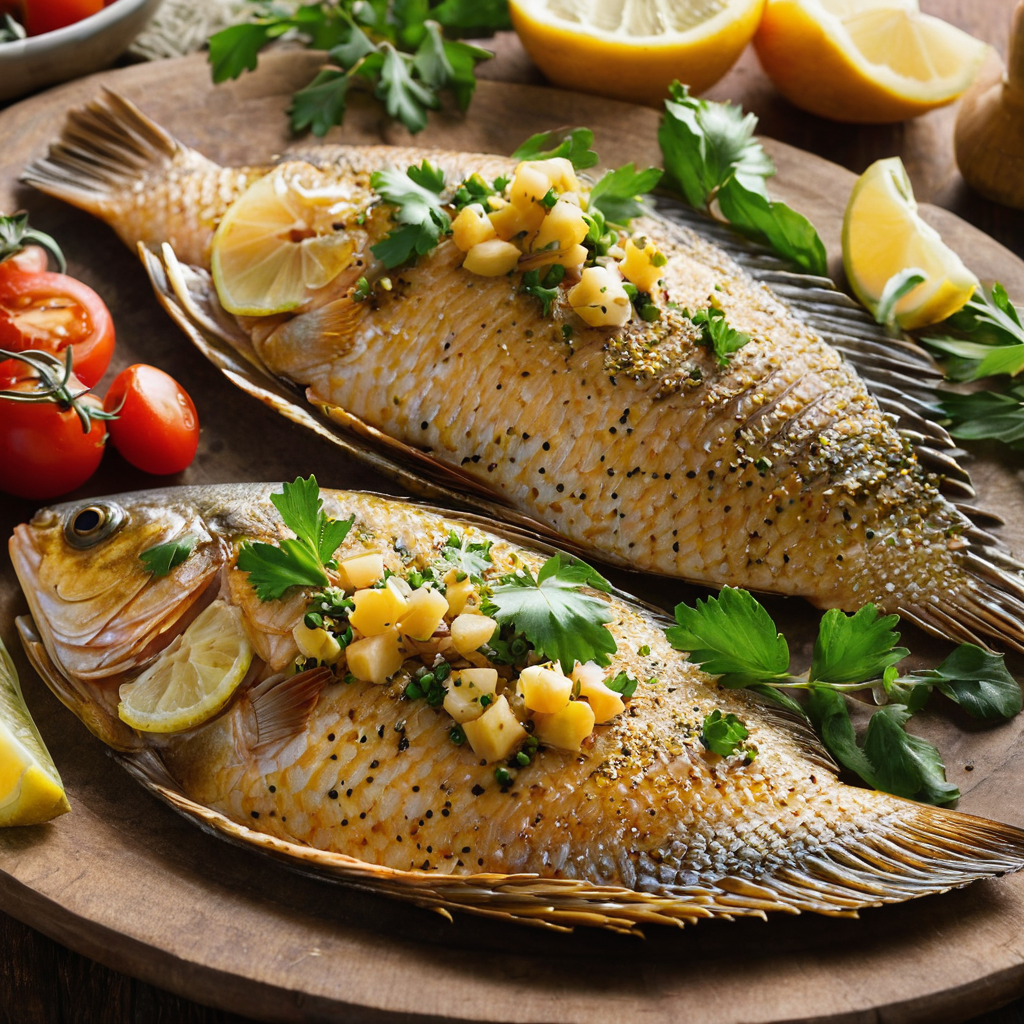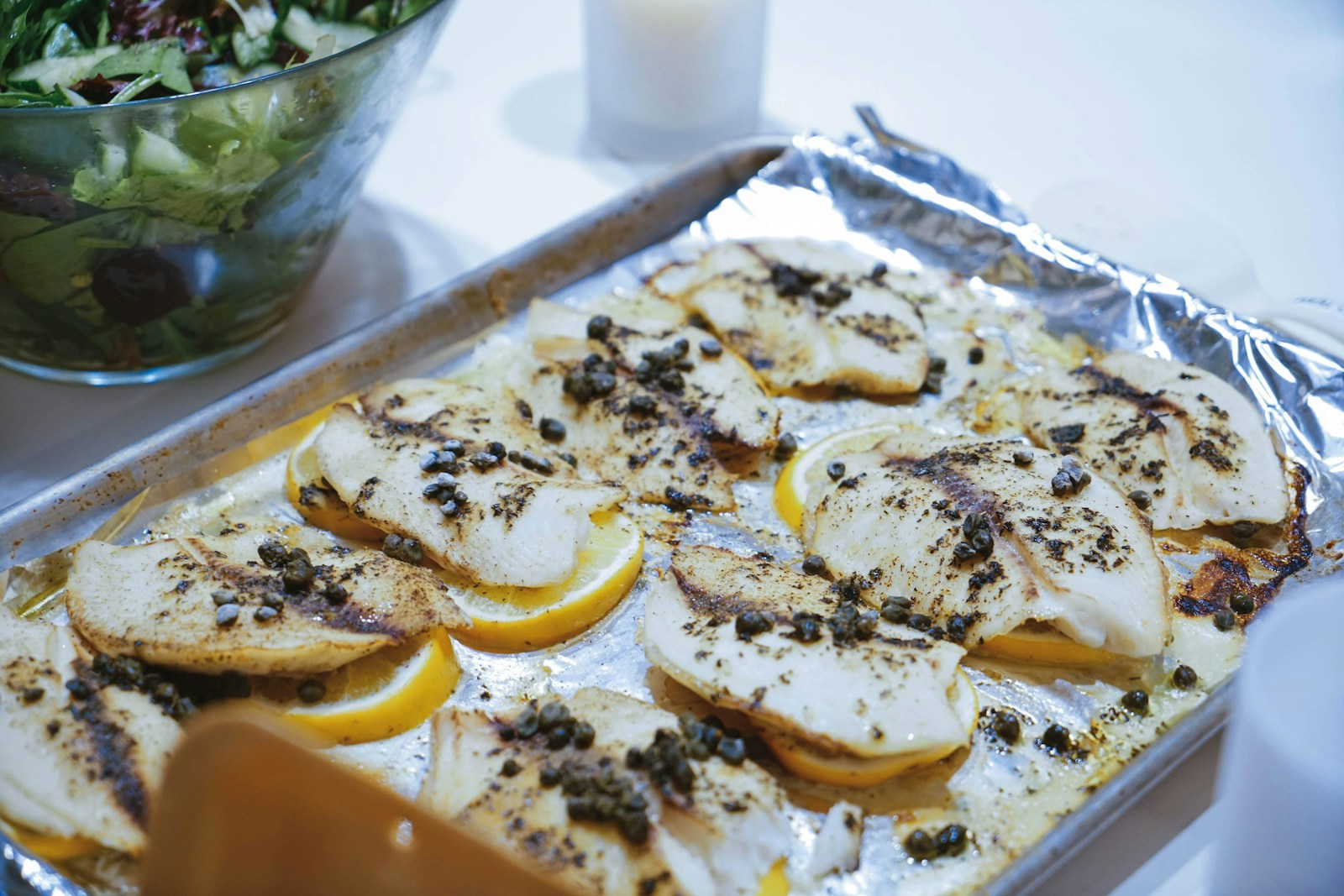A Quick and Easy Recipe for a Healthy Meal
If you’re looking for a healthy and easy-to-prepare dinner option, baked tilapia might be just what you need. Tilapia is a mild-tasting white fish that is low in calories and high in protein, making it a great choice for those who want to eat healthily without sacrificing flavor. Baking tilapia is a simple and fuss-free way to cook it, and there are many delicious recipes you can try.
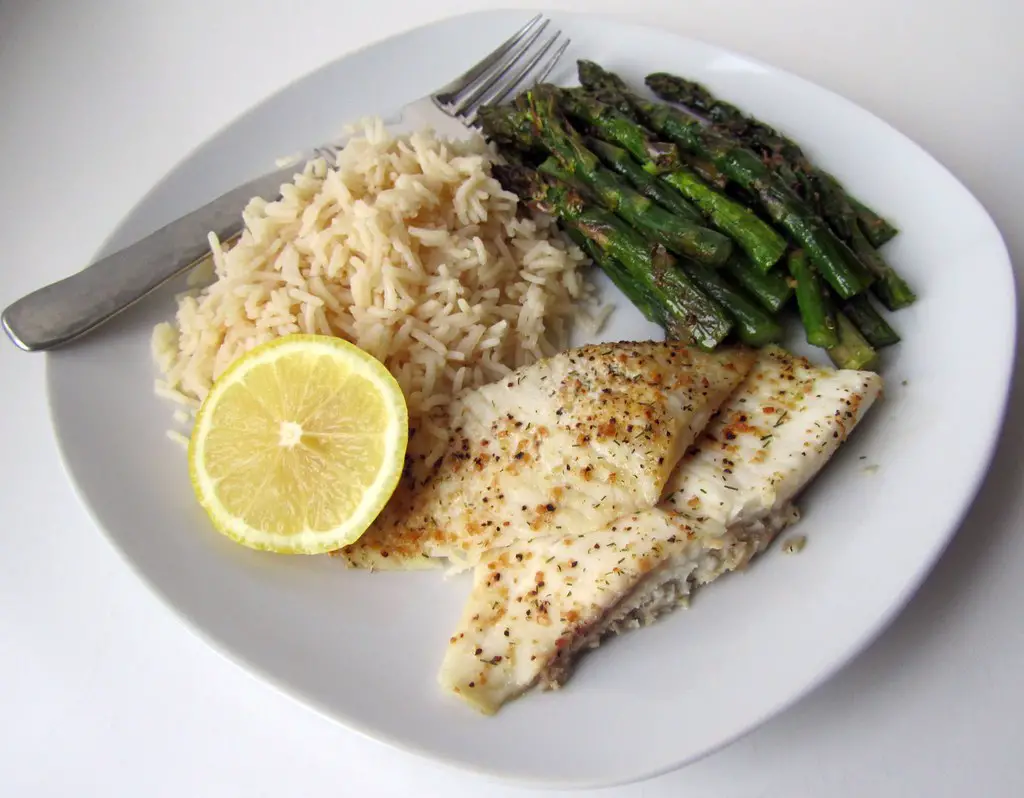
One of the best things about baked tilapia is how versatile it is. You can season it with a wide variety of herbs and spices, and pair it with different sides to create a meal that suits your taste buds. Whether you prefer a light and citrusy flavor, or something more savory and spicy, there’s a baked tilapia recipe out there that will suit your preferences. Plus, since tilapia is such an affordable fish, you won’t have to break the bank to enjoy a delicious and healthy meal.
Choosing the Right Tilapia
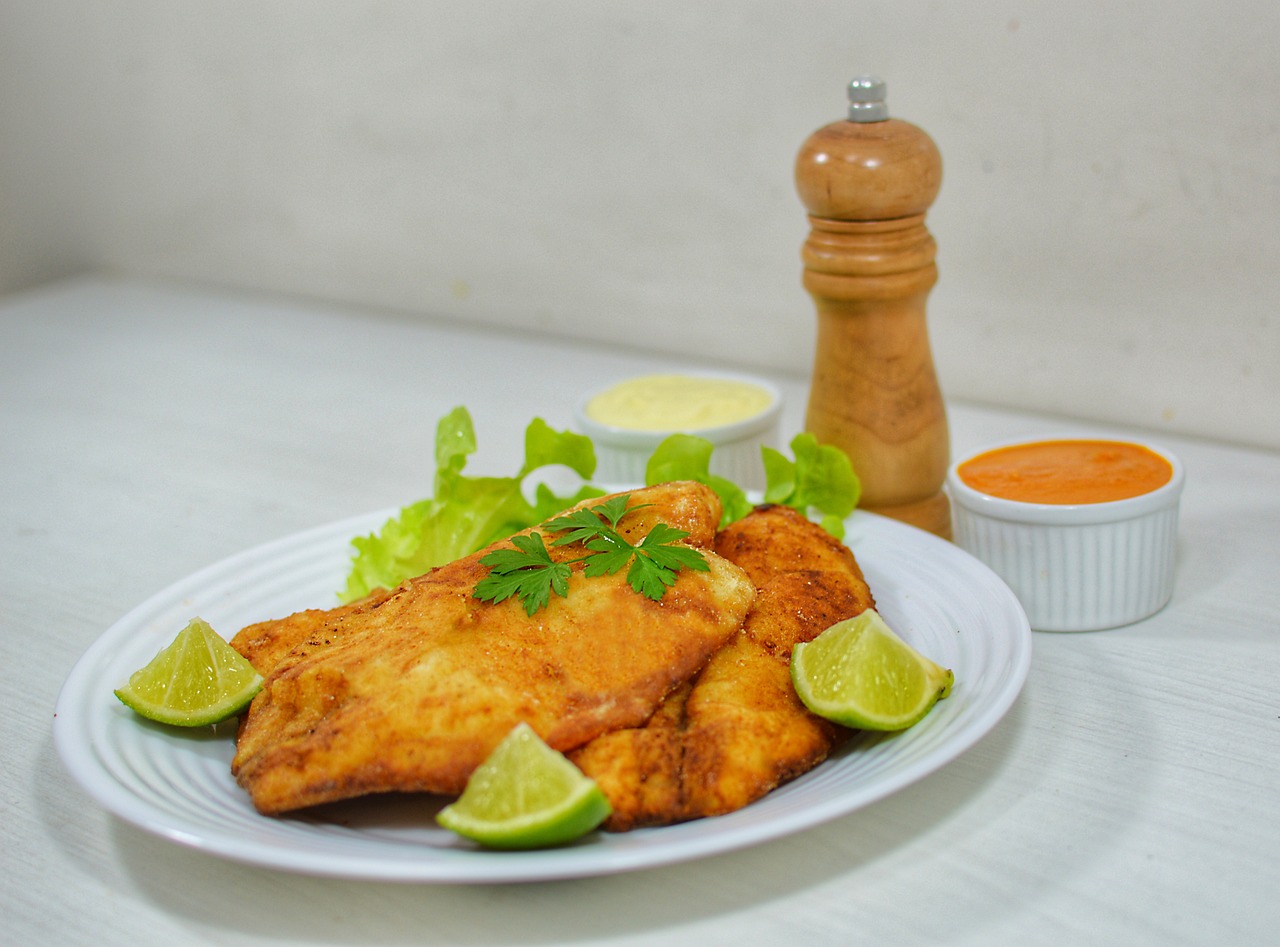
When it comes to making baked tilapia, choosing the right type of tilapia is crucial. There are several types of tilapia available, and each has its unique flavor and texture. Here are some tips to help you choose the perfect tilapia for your baked tilapia recipe:
Fresh vs. Frozen
Fresh tilapia is a great option if you can find it. It has a mild, sweet flavor and a firm texture. However, fresh tilapia is not always available, and it can be expensive. Frozen tilapia is a good alternative. It is often more affordable and widely available, and it can be just as tasty as fresh tilapia if you choose the right type.
Whole vs. Fillets
When buying tilapia, you can choose between whole fish or fillets. Whole fish is a good option if you want to prepare the fish in a traditional way, such as grilling or frying. However, if you are making baked tilapia, fillets are a better choice. They are more convenient to work with, and they cook more evenly than whole fish.
Type of Tilapia
There are several types of tilapia available, including Nile tilapia, Mozambique tilapia, and Blue tilapia. Nile tilapia is the most common type of tilapia and is widely available. It has a mild, sweet flavor and a firm texture, making it a great choice for baked tilapia. Mozambique tilapia has a slightly stronger flavor than Nile tilapia, while Blue tilapia has a firmer texture.
Sustainability
When choosing tilapia, it is important to consider sustainability. Look for tilapia that has been farmed in a sustainable way. Tilapia is one of the most widely farmed fish in the world, and some farming practices can have a negative impact on the environment. Look for tilapia that has been farmed in a way that is environmentally responsible.
By following these tips, you can choose the perfect tilapia for your baked tilapia recipe. Whether you choose fresh or frozen, whole or fillets, or Nile or Blue tilapia, you can create a delicious and healthy meal that your whole family will love.
Preparing Your Tilapia
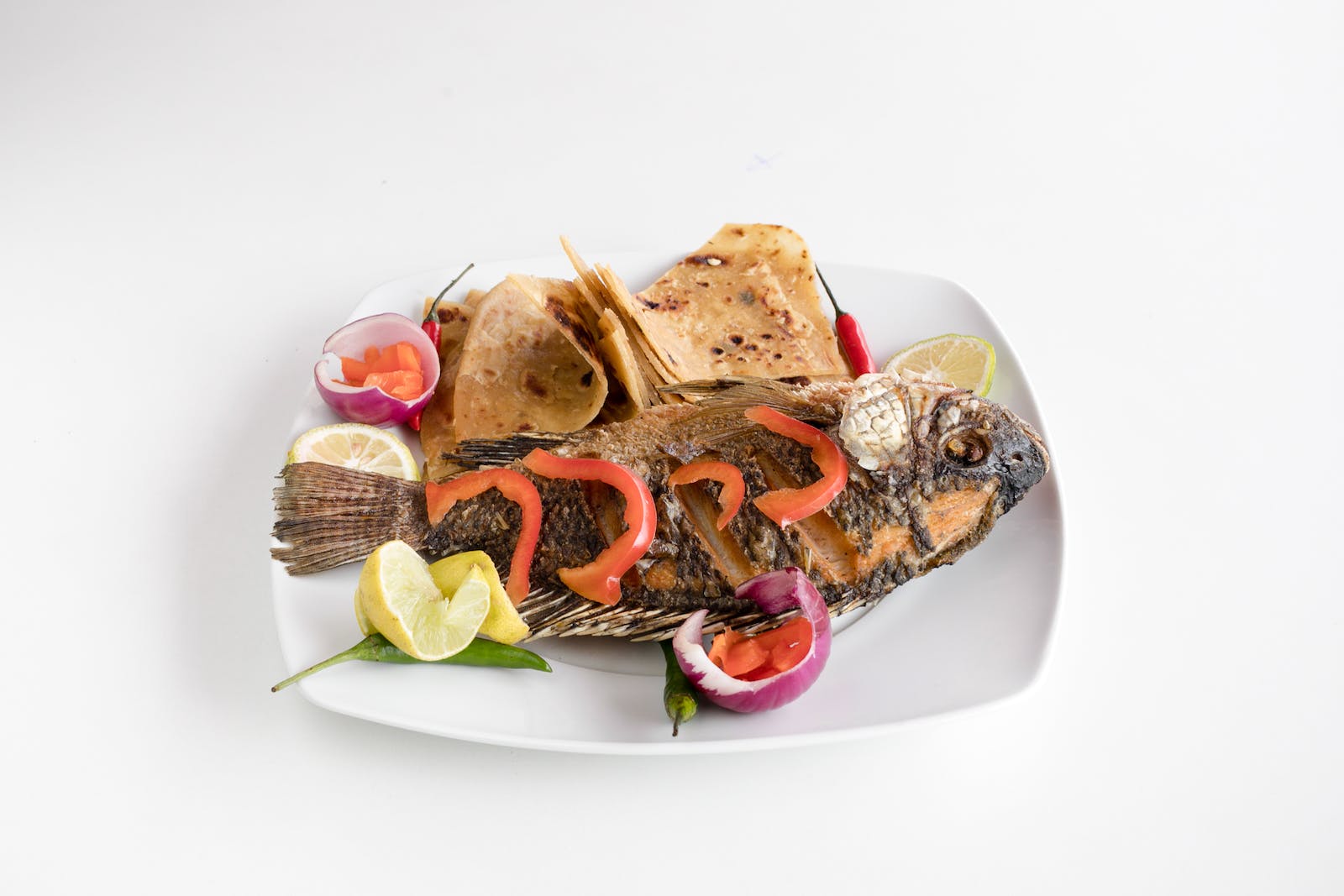
Before baking your tilapia, it’s important to properly prepare it. This includes cleaning and filleting, as well as seasoning and marinating. Here’s what you need to know:
Cleaning and Filleting
When cleaning your tilapia, rinse it under cold water and pat it dry with a paper towel. If your tilapia is whole, you’ll need to fillet it before baking. To do this, place the fish on a cutting board and use a sharp knife to make a cut behind the gills and down to the backbone. Then, turn the fish over and repeat on the other side. Use the knife to separate the fillet from the bones, and repeat on the other side.
Seasoning and Marinating
Once your tilapia is cleaned and filleted, it’s time to season it. You can use a variety of seasonings, such as salt, pepper, garlic powder, paprika, and lemon juice. Be sure to season both sides of the fish evenly. If you have time, marinating your tilapia can add even more flavor. Simply mix your desired marinade ingredients, such as olive oil, lemon juice, and herbs, and let the fish sit in the marinade for at least 30 minutes before baking.
Remember, the key to delicious baked tilapia is properly preparing it before cooking. By cleaning and filleting your fish and seasoning or marinating it, you’ll ensure a tasty and flavorful meal.
Baking Techniques
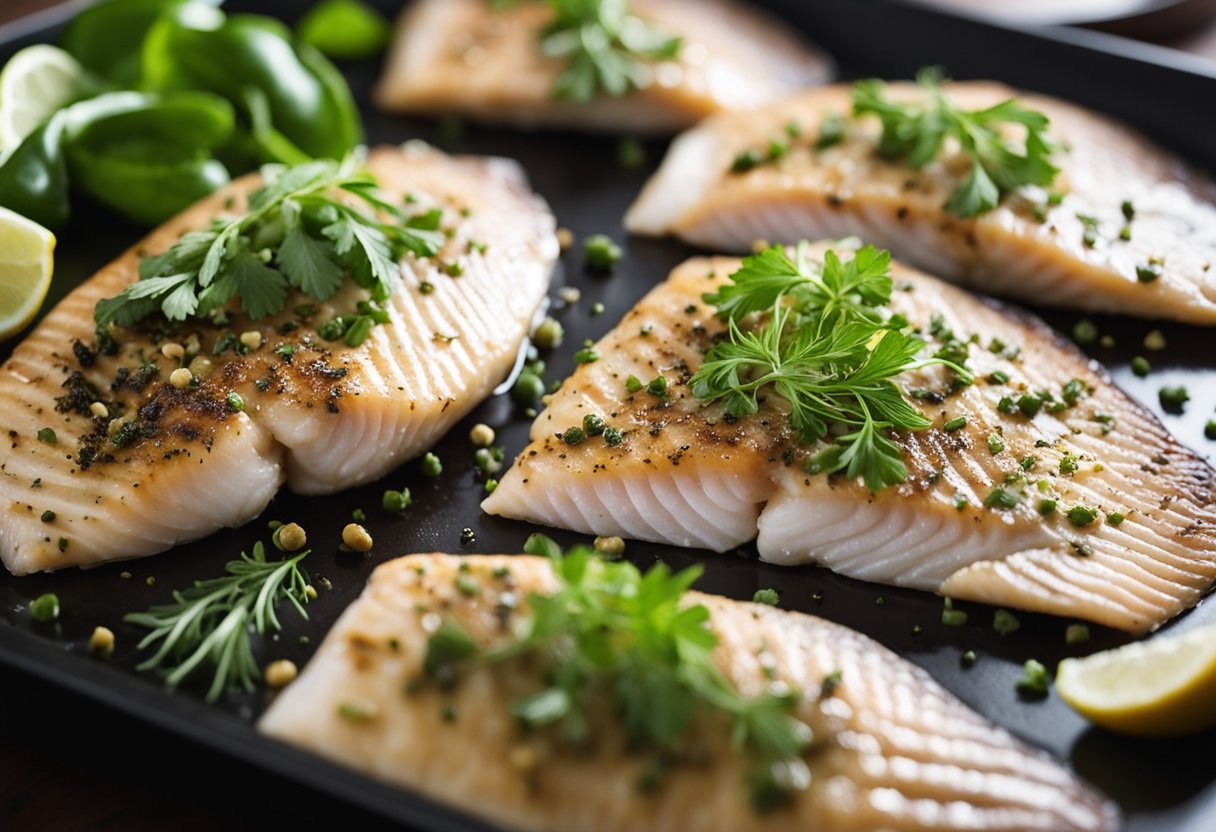
When it comes to baking tilapia, there are a few key techniques that you should keep in mind to ensure that your fish turns out perfectly cooked and full of flavor. In this section, we’ll cover the two most important aspects of baking tilapia: oven settings and cooking time.
Oven Settings
The first thing to consider when baking tilapia is the oven temperature. Most recipes will call for a temperature of around 400°F, but this can vary depending on the recipe and the thickness of your fish fillets. If you’re using a recipe, be sure to follow the instructions carefully to ensure that you’re using the correct temperature.
When it comes to oven settings, it’s also important to consider the type of oven you’re using. If you’re using a convection oven, you may need to adjust the temperature or cooking time slightly to ensure that your fish cooks evenly. Be sure to consult your oven’s manual for specific instructions on how to use it for baking tilapia.
Cooking Time
The second key aspect of baking tilapia is the cooking time. Again, this will vary depending on the recipe and the thickness of your fish fillets. As a general rule of thumb, you should plan on baking your tilapia for around 12-15 minutes, or until the fish is opaque and flakes easily with a fork.
To ensure that your fish cooks evenly, it’s important to arrange the fillets in a single layer on a baking sheet, with a little bit of space between each fillet. If you’re using a particularly thick fillet, you may need to adjust the cooking time slightly to ensure that the fish cooks all the way through.
Overall, baking tilapia is a simple and delicious way to enjoy this versatile fish. By following these baking techniques, you can ensure that your tilapia turns out perfectly cooked and full of flavor every time.
Serving Suggestions

When it comes to serving your baked tilapia, there are a few things to keep in mind. In this section, we’ll cover some of the best accompaniments and presentation tips to make your meal a success.
Accompaniments
A great way to serve baked tilapia is with a side of rice or quinoa. These grains are light and fluffy, and they complement the mild flavor of the fish perfectly. You could also serve your tilapia with roasted or steamed vegetables, such as asparagus, broccoli, or carrots. These vegetables add color and texture to your plate, and they’re packed with vitamins and minerals.
If you’re in the mood for something a little more indulgent, you could try serving your tilapia with a side of garlic mashed potatoes or creamy polenta. These rich and flavorful sides are perfect for a special occasion or a cozy night in.
Presentation
When it comes to presenting your baked tilapia, there are a few things to keep in mind. First, make sure that your fish is cooked to perfection. You want it to be flaky and tender, but not dry or overcooked. You could also garnish your tilapia with fresh herbs, such as parsley, cilantro, or dill. These herbs add color and flavor to your plate, and they’re a great way to make your dish look more professional.
Another way to make your baked tilapia look great is to serve it on a bed of greens, such as spinach, arugula, or mixed greens. These greens add a pop of color to your plate, and they’re a great way to add some extra nutrition to your meal.
In summary, baked tilapia is a versatile and healthy dish that can be served with a variety of accompaniments and presented in many different ways. By following these tips, you can create a delicious and beautiful meal that everyone will love.
Health Benefits of Tilapia
If you’re looking for a healthy and delicious fish option, baked tilapia is a great choice. Not only is it low in calories and fat, but it also provides a range of important nutrients that can benefit your health.
Here are some of the key health benefits of tilapia:
High in Protein
Tilapia is a great source of protein, which is essential for building and repairing tissues in your body. A 3.5-ounce (100-gram) serving of tilapia provides around 26 grams of protein [1].
Rich in Vitamins and Minerals
Tilapia is also a good source of several important vitamins and minerals, including:
- Vitamin B12: important for brain function and the production of red blood cells.
- Niacin: helps convert food into energy and plays a role in DNA repair.
- Selenium: an antioxidant that helps protect your cells from damage.
- Phosphorus: important for bone health and the production of DNA and RNA.
Low in Calories and Fat
Compared to other types of meat, tilapia is relatively low in calories and fat. A 3.5-ounce (100-gram) serving of baked tilapia contains around 128 calories and just 2.3 grams of fat [2].
Heart-Healthy
Tilapia is a good source of omega-3 fatty acids, which are important for heart health. These healthy fats can help lower your risk of heart disease by reducing inflammation and improving cholesterol levels [3].
Conclusion
Overall, baked tilapia is a healthy and nutritious addition to your diet. It’s high in protein, vitamins, and minerals, while also being low in calories and fat. Plus, it’s a good source of heart-healthy omega-3 fatty acids.
Storing Leftovers
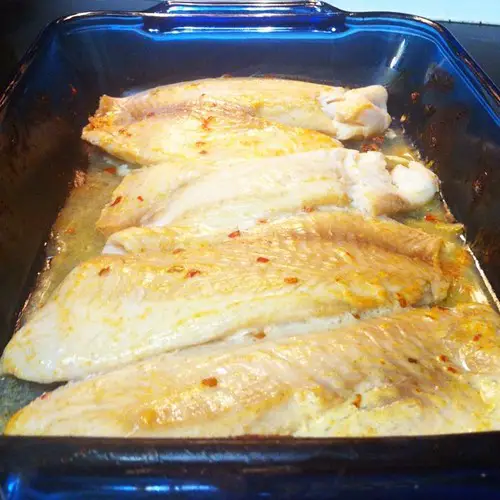
If you have any leftover baked tilapia, you can store it in the refrigerator for up to three days. Make sure to wrap it tightly in plastic wrap or aluminum foil to prevent it from drying out. You can also place it in an airtight container.
If you want to freeze the leftovers, make sure to do so within two hours of cooking. You can store it in the freezer for up to two months. To thaw the frozen baked tilapia, place it in the refrigerator overnight. You can also thaw it in the microwave, but make sure to use the defrost setting and check it frequently to prevent overcooking.
When reheating the baked tilapia, make sure to do so thoroughly to prevent the growth of bacteria. You can reheat it in the oven, microwave, or on the stovetop. If you’re using the oven, preheat it to 350°F and bake the fish for 10-15 minutes or until it’s heated through. If you’re using the microwave, cover the fish with a damp paper towel and microwave it on high for 1-2 minutes or until it’s heated through.
Remember that reheating the fish multiple times can affect its texture and flavor. It’s best to reheat it only once and consume it within a day or two.
| Leftover Storage Tips |
|---|
| Wrap tightly in plastic wrap or aluminum foil |
| Store in an airtight container |
| Freeze within two hours of cooking |
| Thaw in the refrigerator overnight or in the microwave |
| Reheat thoroughly to prevent the growth of bacteria |
| Reheat only once and consume within a day or two |
By following these simple storage tips, you can enjoy your leftover baked tilapia without compromising on taste or quality.
Troubleshooting Common Issues
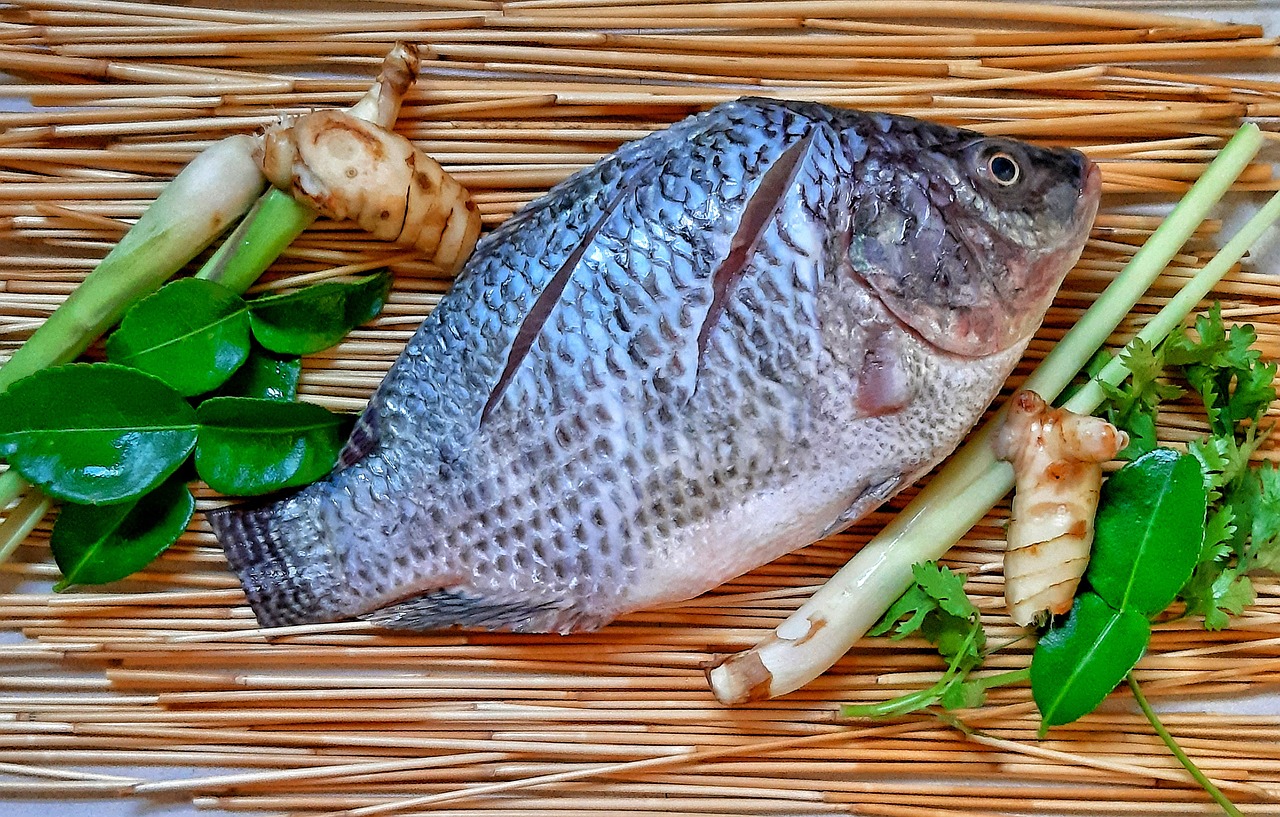
Dry or Overcooked Tilapia
If your baked tilapia comes out dry and overcooked, it’s likely that you left it in the oven for too long. Tilapia is a delicate fish that cooks quickly, so it’s important to keep an eye on it while it’s baking.
To prevent dryness, make sure to brush the tilapia with oil or butter before baking. You can also cover it with foil or parchment paper to trap in moisture and prevent it from drying out.
If your tilapia is already overcooked, try adding a sauce or topping to add moisture back into the dish. A simple lemon butter sauce or salsa can help revive the flavor and texture of the fish.
Undercooked Tilapia
Undercooked tilapia can be a health hazard, so it’s important to make sure that it’s fully cooked before serving. If your tilapia is undercooked, it may be due to a few different factors.
First, make sure that your oven is preheated to the correct temperature before baking. If the oven is too cool, the tilapia may not cook evenly.
Second, check the thickness of your tilapia fillets. Thicker fillets may take longer to cook, so adjust your baking time accordingly.
Finally, use a meat thermometer to check the internal temperature of the tilapia. The FDA recommends cooking fish to an internal temperature of 145°F (63°C) to ensure that it’s safe to eat.
By following these tips, you can troubleshoot common issues and ensure that your baked tilapia turns out perfectly every time.
Sustainable Fishing Practices
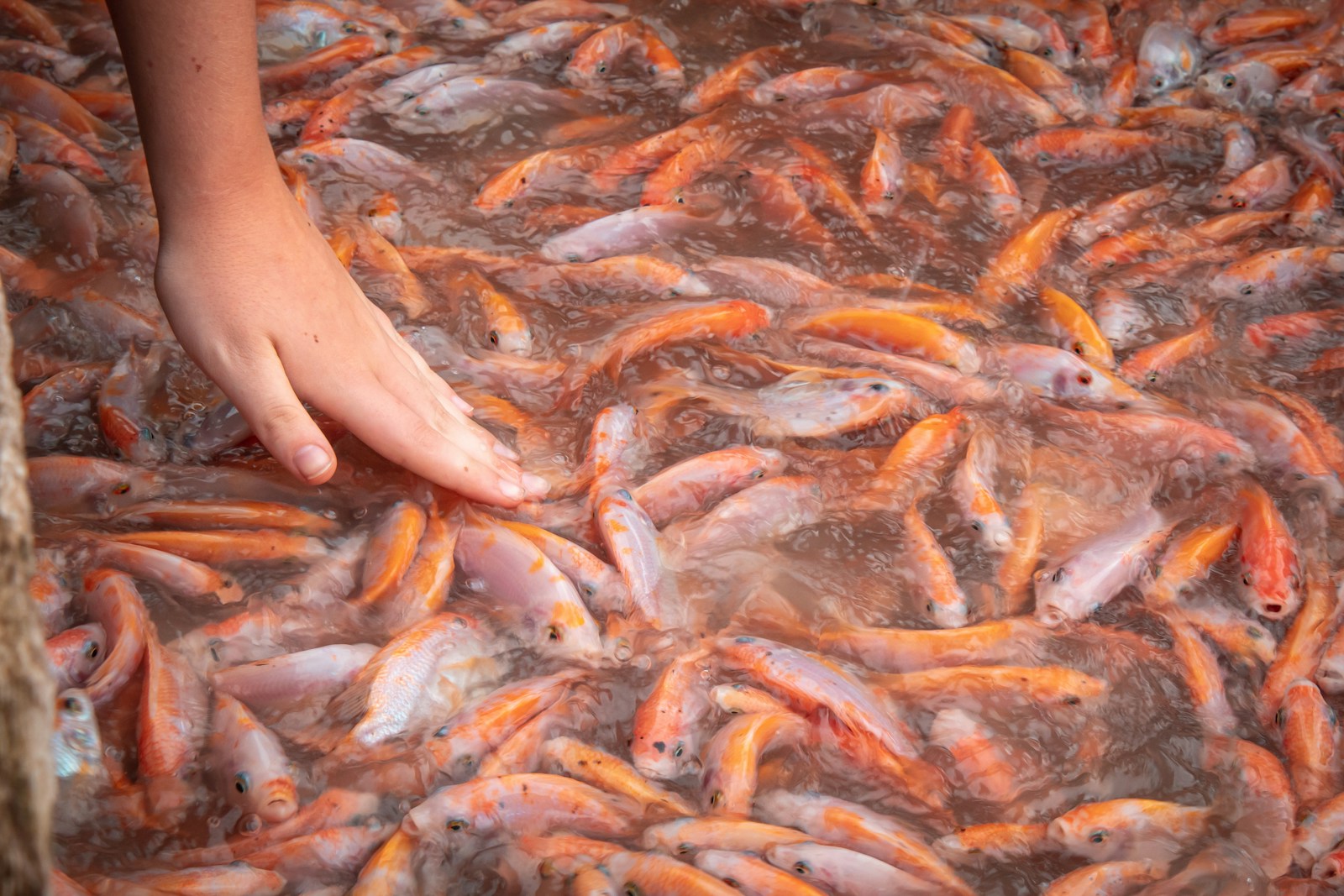
When it comes to cooking baked tilapia, it’s important to consider the sustainability of the fish you’re using. Sustainable fishing practices are crucial to maintaining healthy fish populations and protecting the environment.
One way to ensure that you’re using sustainable tilapia is to look for fish that has been farmed in a responsible and eco-friendly manner. This means that the fish have been raised in a way that minimizes their impact on the environment, such as using efficient feed conversion and reducing pollution and waste.
Another important factor to consider is where the tilapia was farmed. According to the Seafood Watch, you should try to buy tilapia from Colombia, Indonesia, Mexico, or Taiwan. These countries have a good track record of responsible and sustainable tilapia farming.
It’s also important to avoid tilapia that has been farmed in China or other countries that have a poor record of sustainable fishing practices. If you’re not sure where your tilapia comes from, it’s best to assume that it’s from China or an unrated source and choose a different sustainable seafood option.
By choosing sustainable tilapia and supporting responsible fishing practices, you can help protect the environment and ensure that future generations can continue to enjoy this delicious and nutritious fish.
Pairing with Wines and Beverages
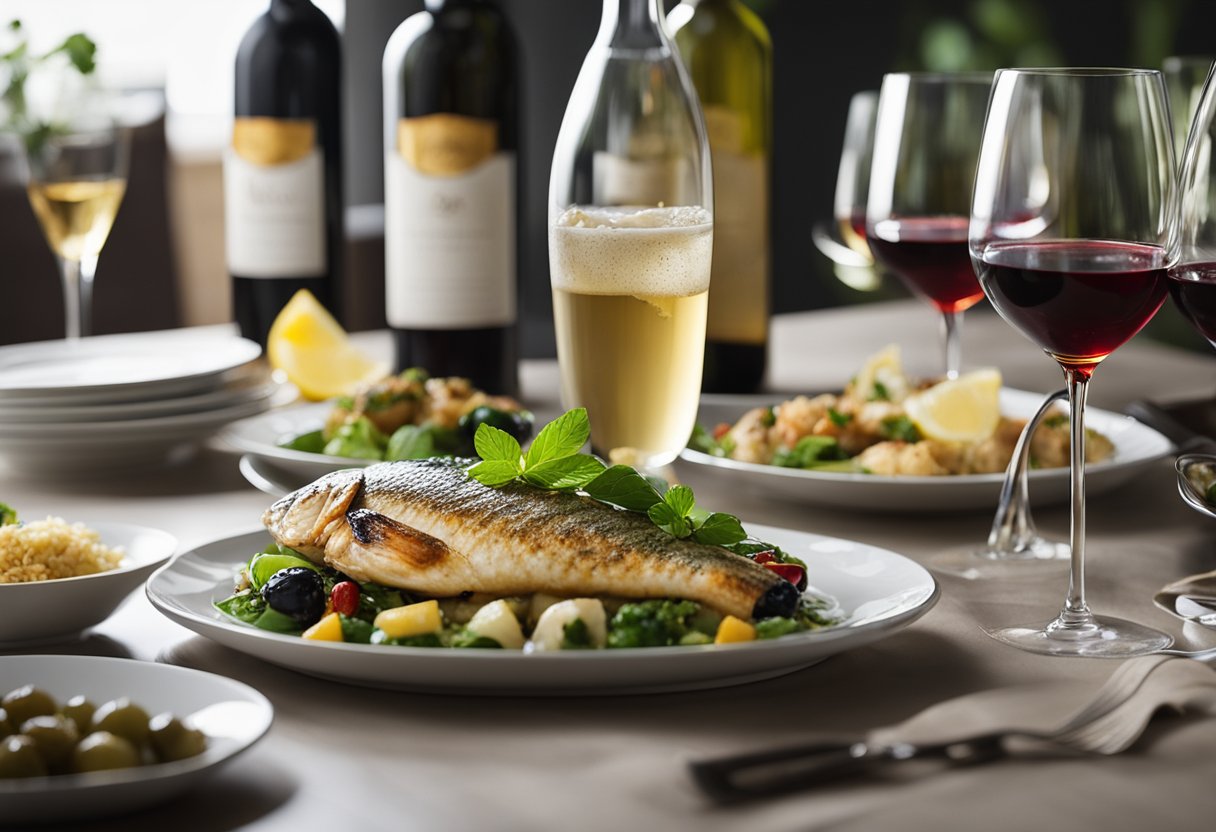
When it comes to pairing your baked-tilapia with a beverage, there are a few things to keep in mind. The right drink can enhance the flavors of the fish and make for a more enjoyable meal. Here are some options to consider:
White Wines
White wines are a classic pairing for fish, and baked-tilapia is no exception. A light-bodied white wine such as Pinot Gris or Sauvignon Blanc can complement the mild flavor of the fish. If you prefer a fuller-bodied wine, Chardonnay or Riesling are also good options.
Rosé
For a more flavorful baked-tilapia dish, consider serving the fish with a dry rosé. The acidity in the wine can cut through the richness of the dish, while the fruitiness can complement the flavors of the fish.
Sparkling Wine
If you’re looking for a festive beverage to serve with your baked-tilapia, consider a sparkling wine. The bubbles can add a celebratory feel to the meal, while the acidity can help cleanse your palate between bites.
Beer
If you prefer beer over wine, a light beer such as a pilsner or lager can pair well with baked-tilapia. The crispness of the beer can complement the mild flavor of the fish.
Iced Tea
If you’re looking for a non-alcoholic option, iced tea can be a refreshing choice. The sweetness of the tea can balance out the saltiness of the fish, while the cold temperature can help offset the heat of the oven.
No matter what beverage you choose to pair with your baked-tilapia, be sure to serve it chilled or at the appropriate temperature. This will ensure that the flavors of both the fish and the beverage are at their best.
Adapting Recipes for Dietary Restrictions
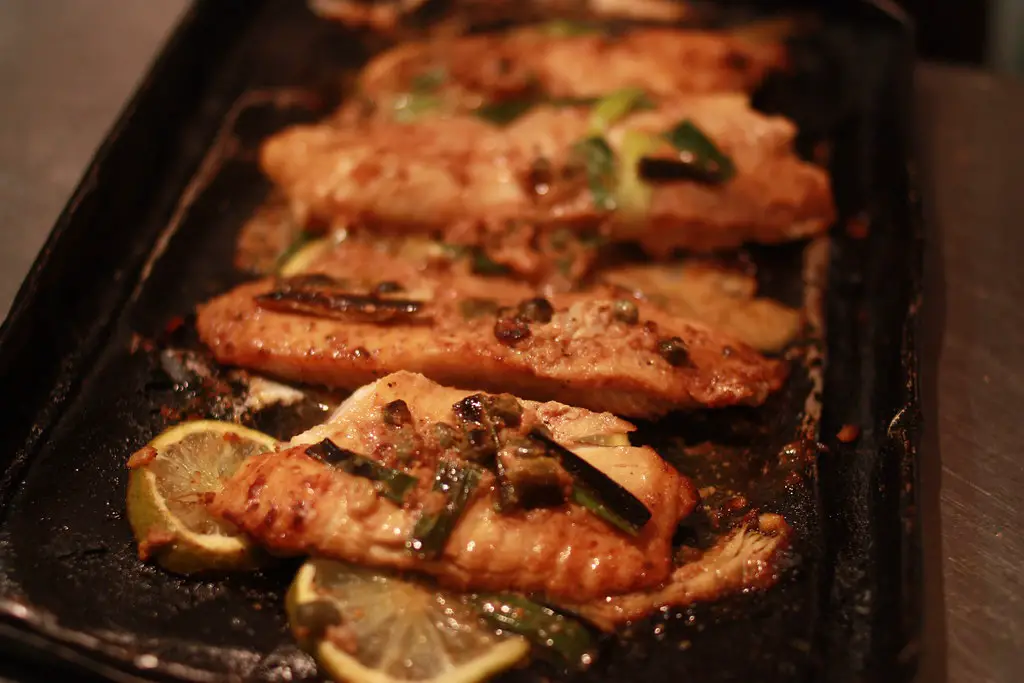
If you have dietary restrictions, you may wonder if you can still enjoy the delicious taste of baked tilapia. The good news is that there are many ways to adapt recipes to fit your dietary needs. Here are some tips for making baked tilapia gluten-free, low-carb, and paleo-friendly.
Gluten-Free
If you are gluten-free, you can still enjoy baked tilapia by using gluten-free ingredients. Instead of using regular breadcrumbs, try using gluten-free breadcrumbs made from rice or corn. You can also use almond flour or coconut flour as a gluten-free alternative to breadcrumbs. Additionally, make sure to use gluten-free seasonings and spices to avoid any hidden sources of gluten.
Low-Carb
If you are following a low-carb diet, you can still enjoy baked tilapia by using low-carb ingredients. Instead of using breadcrumbs, try using crushed pork rinds or almond flour as a low-carb alternative. You can also use low-carb vegetables like zucchini, broccoli, and asparagus as your side dish. Be sure to avoid using high-carb ingredients like potatoes or rice.
Paleo-Friendly
If you are following a paleo diet, you can still enjoy baked tilapia by using paleo-friendly ingredients. Instead of using breadcrumbs, try using almond flour or coconut flour as a paleo-friendly alternative. You can also use paleo-friendly seasonings like garlic, paprika, and thyme. For your side dish, try using roasted vegetables like cherry tomatoes, zucchini, and asparagus.
By adapting recipes to fit your dietary needs, you can still enjoy the delicious taste of baked tilapia while sticking to your diet. Whether you are gluten-free, low-carb, or paleo-friendly, there are many options available to you.
Frequently Asked Questions
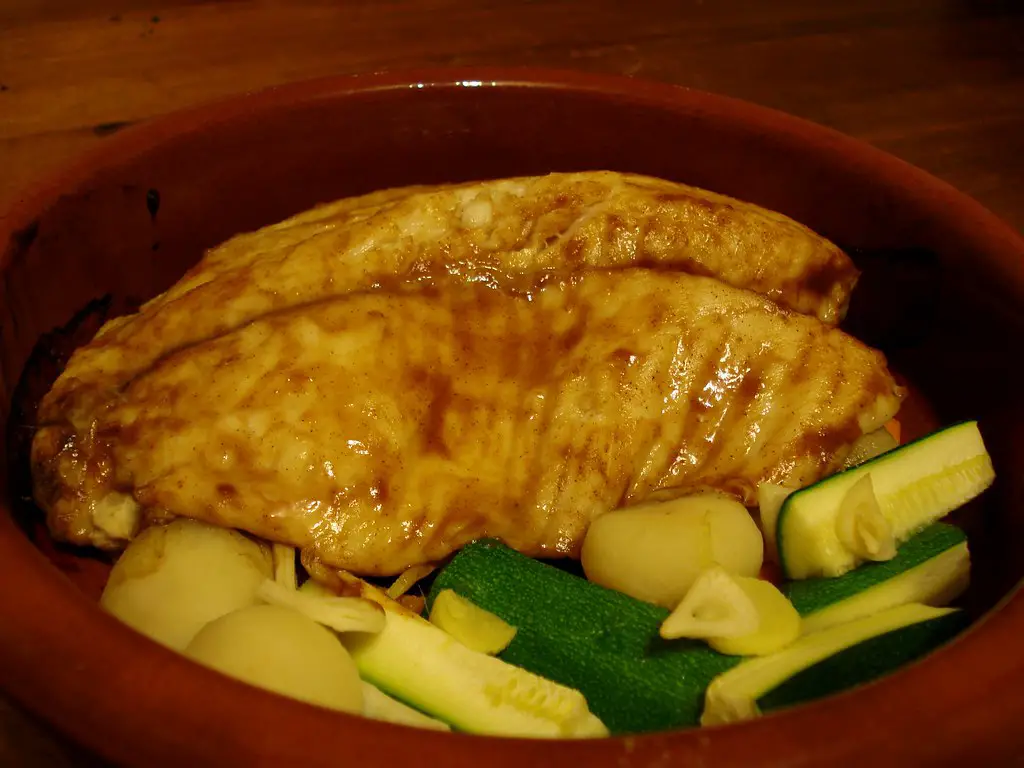
What is the ideal temperature to bake tilapia for optimal flavor and texture?
The ideal temperature to bake tilapia is 400°F (204°C). This temperature ensures that the fish is cooked evenly, and the end result is a perfectly baked tilapia with a crispy exterior and flaky interior.
Can you provide a simple recipe for making crispy baked tilapia?
Sure, here’s a simple recipe for making crispy baked tilapia:
- Preheat the oven to 400°F (204°C).
- Season the tilapia fillets with salt and pepper.
- In a bowl, mix together breadcrumbs, grated Parmesan cheese, garlic powder, and paprika.
- Dip each fillet in the breadcrumb mixture, making sure it’s coated well.
- Place the fillets on a baking sheet lined with parchment paper.
- Bake for 12-15 minutes, or until the tilapia is cooked through and the coating is crispy.
What are the health benefits of consuming baked tilapia?
Baked tilapia is a low-calorie, high-protein fish that is rich in omega-3 fatty acids, which can help reduce inflammation and improve heart health. Tilapia is also a good source of vitamins and minerals such as vitamin B12, phosphorus, and selenium.
How does the cooking time for tilapia vary with different oven temperatures?
The cooking time for tilapia varies with different oven temperatures. If you bake tilapia at 375°F (190°C), it will take approximately 15-20 minutes to cook. And If you bake it at 400°F (204°C), it will take about 12-15 minutes to cook. If you bake it at 425°F (218°C), it will take around 10-12 minutes to cook.
Is it better to bake tilapia wrapped in foil, and what are the advantages?
Baking tilapia wrapped in foil is a good option as it helps to keep the fish moist and tender. It also helps to infuse the fish with any flavors you add to the foil packet, such as lemon, garlic, or herbs. Plus, it makes for easy clean-up as the foil can be thrown away after use.
When baking tilapia, is it safer to cook it covered or uncovered, and why?
When baking tilapia, it is safer to cook it uncovered. This allows the heat to circulate around the fish and cook it evenly. Covering the fish can create steam, which can make the fish mushy and overcooked. However, if you are baking the fish with a sauce or other ingredients that need to be contained, covering it with foil is a good option.
External Links
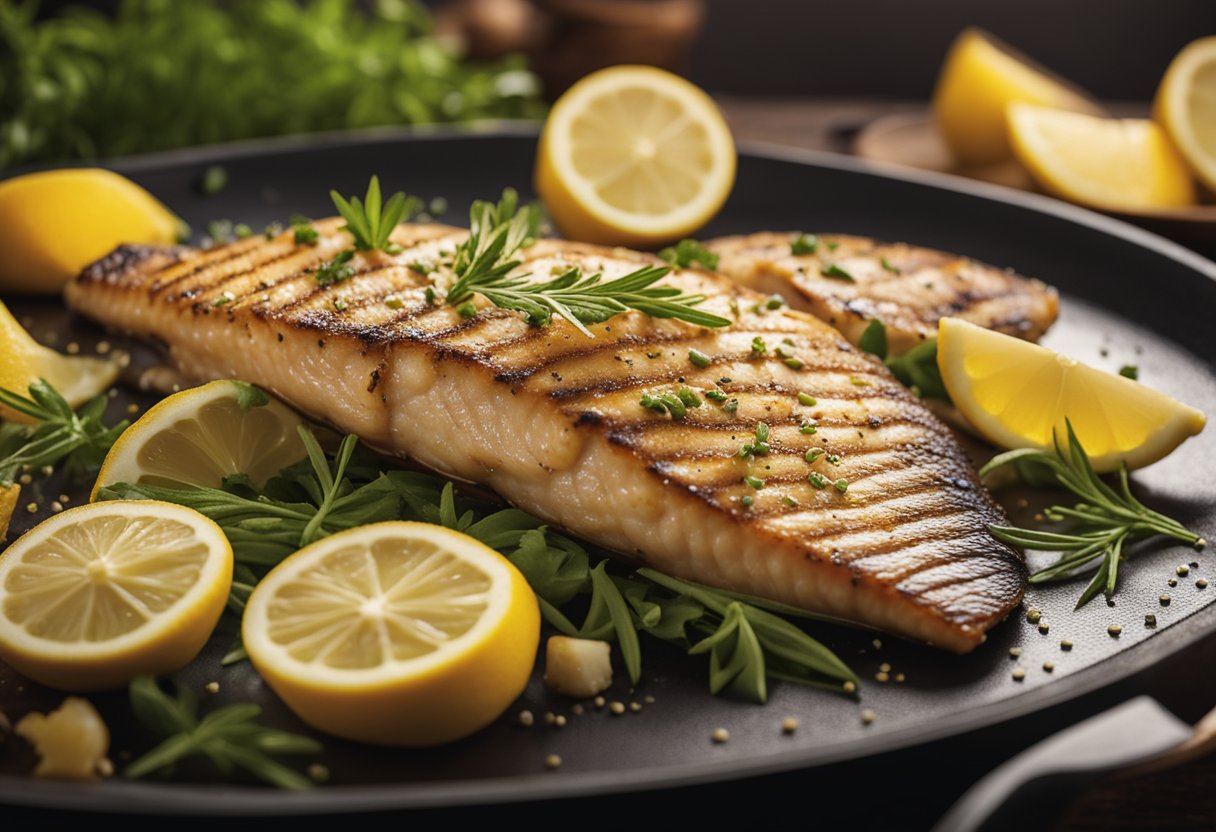
Looking to expand your knowledge on baked tilapia? Check out these external links for more information and recipes!
- House of Nash Eats: This website offers an easy oven-baked tilapia recipe that is seasoned with garlic and lime zest. It is a great healthy option that is loaded with protein and pairs perfectly with your favorite sides.
- Wholesome Yum: This website provides a flaky oven-baked tilapia recipe that is made with only 5 simple ingredients: tilapia, butter, lemon, parsley, and garlic. It is a quick and easy recipe that can be made in only 20 minutes.
- Delish: Looking for the best oven-baked tilapia recipe? Delish has got you covered with their garlicky lemon baked tilapia recipe. It is a weeknight dinner dream that is sure to please your taste buds.
- NYT Cooking: This website provides a baked tilapia recipe that is simple and easy to make. It includes butter, parsley, red-pepper flakes, and salt. The recipe can be made in only 30 minutes and is perfect for a quick weeknight dinner.
- Healthy Fitness Meals: This website offers a sheet pan oven-baked tilapia recipe that is quick and simple to make. It is made with one sheet pan and takes no more than 20 minutes to prepare. The recipe includes herbal oil mixture and can be served with your favorite sides.
These external links provide a variety of baked tilapia recipes that are easy to make and perfect for a quick weeknight dinner. Whether you are looking for a healthy option or something that is loaded with protein, these websites have got you covered.
More FAQs
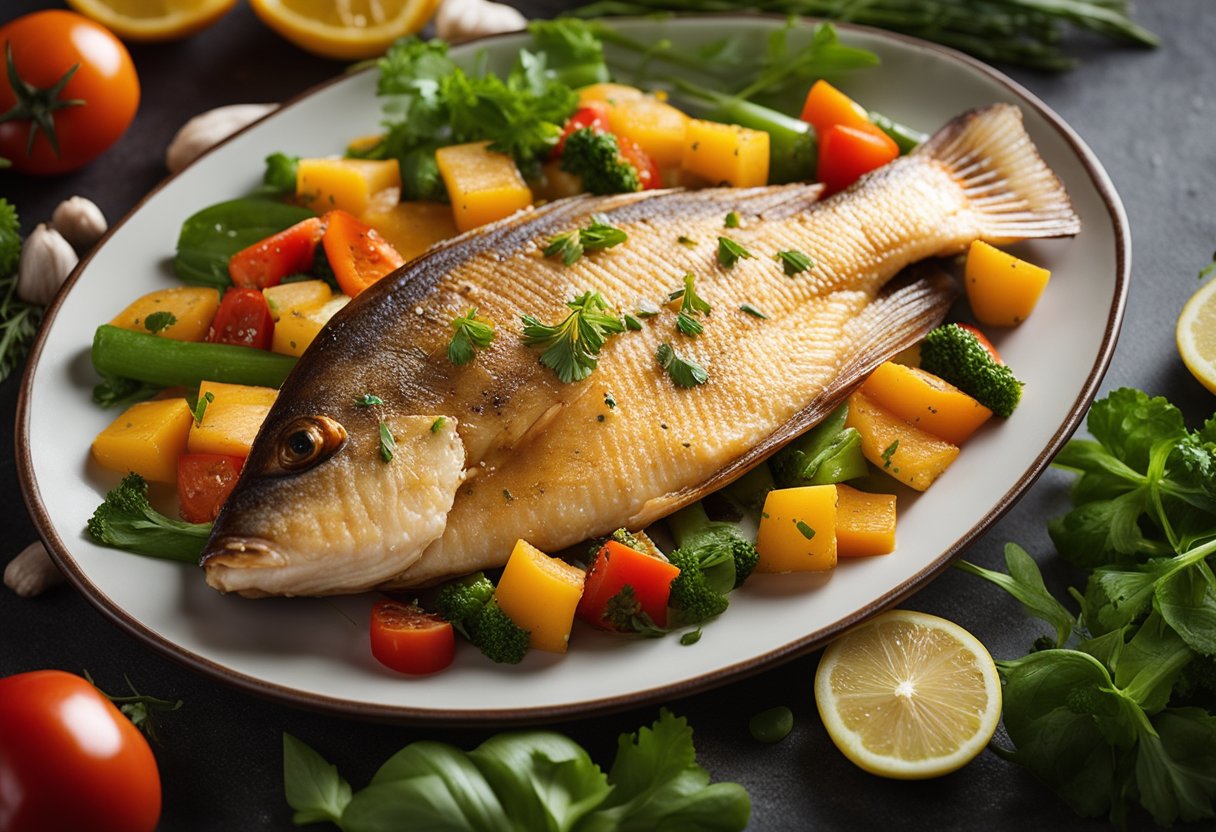
Here are some more frequently asked questions about baked tilapia:
How healthy is baked tilapia?
Baked tilapia is a healthy and nutritious meal option. It is a great source of protein, low in calories, and rich in essential vitamins and minerals such as vitamin B12, phosphorus, and selenium. However, it is important to note that the nutritional value of tilapia can vary depending on how it is prepared and cooked. For example, if it is breaded and fried, it can become high in calories and unhealthy fats.
What should tilapia look like when cooked?
When tilapia is cooked, it should be opaque and easily flake apart with a fork. The flesh should be firm and slightly translucent. If the flesh appears mushy or slimy, it may be a sign that the fish is overcooked or spoiled.
Why is my baked tilapia mushy?
If your baked tilapia is mushy, it may be a sign that it was overcooked or cooked at too low of a temperature. To avoid this, make sure to cook your tilapia at the recommended temperature and time. You can also try marinating the fish beforehand to help keep it moist and tender.
What are some important facts about tilapia?
Tilapia is a freshwater fish that is native to Africa and the Middle East. It is a popular food fish that is farmed in many countries around the world. Tilapia is a sustainable fish option that is low in mercury and high in protein. It is also a versatile fish that can be cooked in a variety of ways, including baked, grilled, and fried.
Conclusion
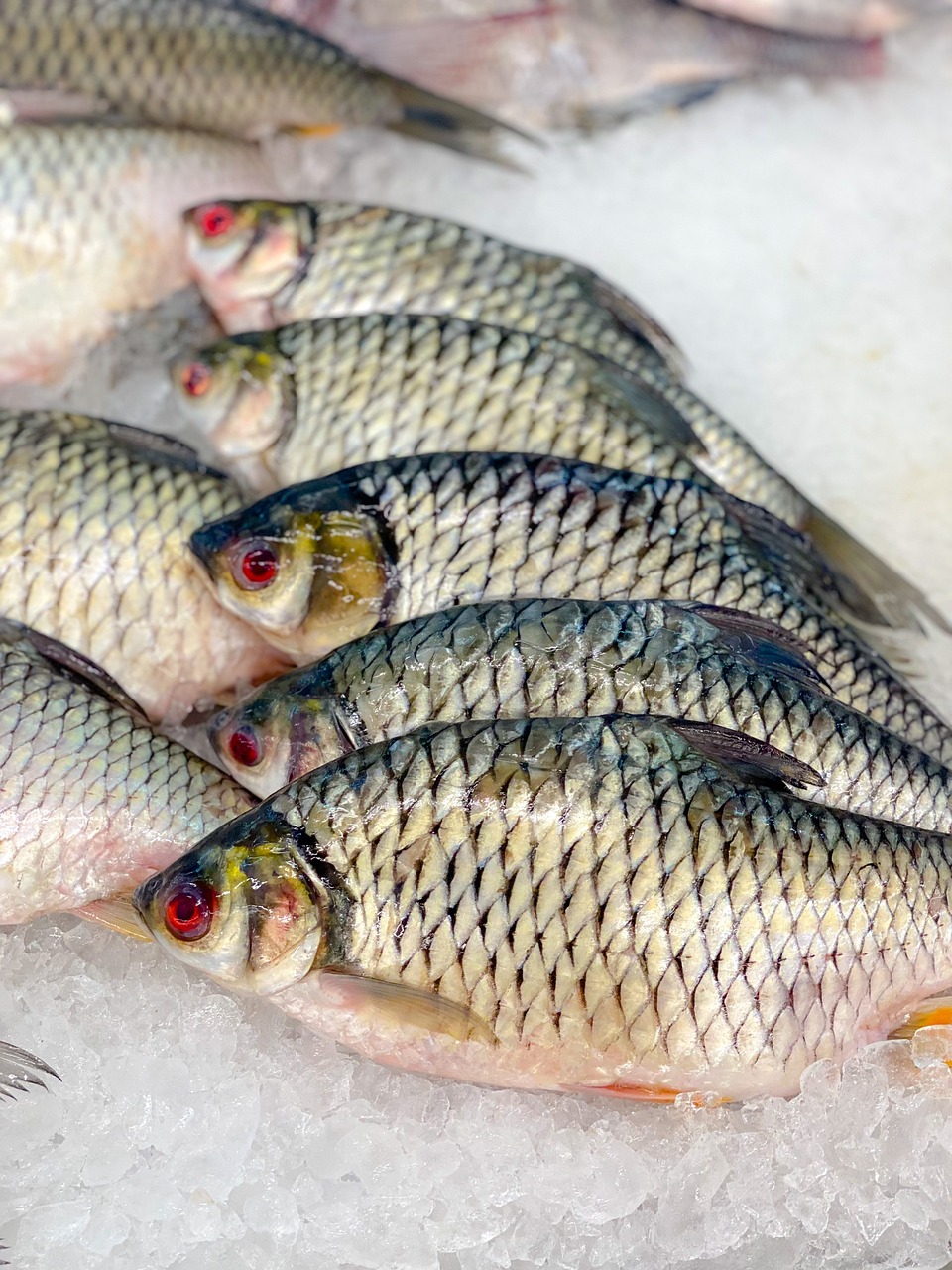
Congratulations! You have successfully learned how to bake tilapia in the oven. This versatile fish can be seasoned in a variety of ways, making it a great option for any meal.
Remember to always choose fresh tilapia and to properly season it with herbs and spices of your choice. You can also add lemon juice or butter for extra flavor.
When baking tilapia, it is important to keep an eye on the fish to avoid overcooking. A general rule of thumb is to bake it for 10-15 minutes, depending on the thickness of the fillets.
In addition, tilapia is a healthy and low-calorie option for those who are watching their weight. It is a good source of protein, omega-3 fatty acids, and other essential nutrients.
Overall, baked tilapia is a delicious and healthy meal option that is easy to prepare and customize to your liking. Enjoy!
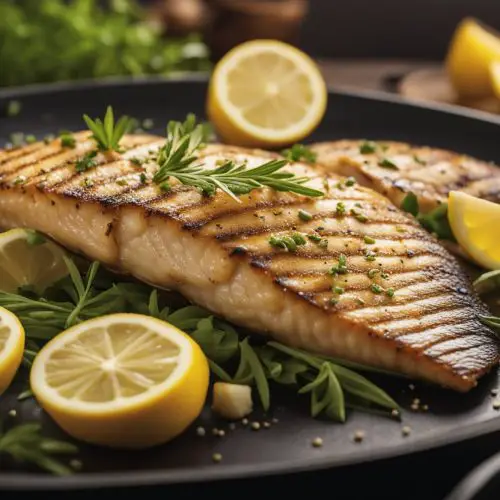
Baked Tilapia with Lemon Herb Crust
Ingredients
- 4 tilapia fillets
- 2 tablespoons olive oil
- 2 cloves garlic, minced
- 1 teaspoon lemon zest
- 2 tablespoons lemon juice
- 1/4 cup fresh parsley, chopped
- 1 teaspoon dried oregano
- 1 teaspoon dried thyme
- Salt and pepper to taste
- 1/2 cup breadcrumbs
- Lemon slices for garnish
Instructions
- Preheat your oven to 375°F (190°C).
- Pat the tilapia fillets dry with paper towels and place them in a baking dish.
- In a small bowl, mix together olive oil, minced garlic, lemon zest, lemon juice, parsley, oregano, thyme, salt, and pepper.
- Brush the mixture over each tilapia fillet, ensuring they are well-coated.
- Sprinkle breadcrumbs evenly over the fillets, pressing them gently to adhere.
- Bake in the preheated oven for 15-20 minutes or until the tilapia is cooked through and flakes easily with a fork.
- Garnish with lemon slices before serving.

